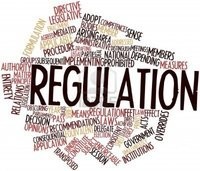In the FirstWord report Branded vs. Generic Drugs in Latin America published in February 2010, it is stated that on every border, across every frontier of Latin America, a revolution is underway. Prefaced by the groundbreaking Hatch-Waxman Act of 1984, the war for market share between generic and branded pharmaceuticals is rapidly unfolding in Latin American countries from Brazil and Mexico to Ecuador and Cuba.
The battle lines have long been drawn. Since expanding the definition, scope and marketability of generics, Latin American governments have embraced them, and to assert their dominance over branded products, have established aggressive policies, including heavily fining physicians who prescribe brand drugs. At the forefront is Brazilian President Mr Luiz Inacio Lula da Silva, who has vowed that the Brazilian pharmaceutical sector would be one of four pillars upon which he would build industrial policy. “Between our trade and our health,” he recently said, “we have chosen to look after our health.”
And so far, it is a strategy that is working. Sales of generics in Brazil are growing at a higher rate than the entire pharmaceutical industry, and according to a 2009 report by Ernst & Young, are expected to hit 20% of the industry’s volume this year. It is not surprising. Along with much of Latin America, Brazil is attracting significant international investment; currently, it is the second largest pharmaceutical market in the region, with projected sales of US$8 billion. Politically, the debate over generics and their accessibility in limited-income countries has also drawn international attention and won backing from the World Health Organization, the World Bank and Médecins Sans Frontières. Generics have established their support, but where does Big Pharma stand?
FirstWord’s decisive investigation into the politics, terrain and economics of the battle between branded and generic drugs takes you across five countries and behind the scenes, to offer concise insights into the current market environment. Based on clear-sighted historical analysis and building on the current political landscape, the report examines how pro-generic policy has given rise to increased market share, international investment and local development. Containing definitions, sales and price charts drawn from several sources and policy sketches of the five dominant countries in the region, the report goes beyond a battlefield to offer marketing and development strategies by generics and Big Pharma, also defining prospects for the future. The report investigates the generics vs. branded drugs market to establish how aggressive pro-generic policy is impacting all aspects of the pharmaceutical industry, what strategies work, and which new opportunities will arise. It analyses the historical context for current pro-generic policies across Latin America, establishes current government sentiment and industry-building platforms, offers multiple tables charting industry-sensitive sales and price information, outlines strategies by both generic and brand companies to stay relevant in the fast-growing region, contains political and industry profiles of the five leading countries in the region, examines Latin America’s emerging generic export industry, profiles Indian generics producer Ranbaxy Laboratories, which has moved aggressively to establish a Latin American market share, and details the opportunities on offer for branded and generic companies in a region logging market growth rates of more than 10% per year.
Reference:
Branded vs Generic Drugs in Latin America. FirstWord report. 2010 February.








 0
0











Post your comment